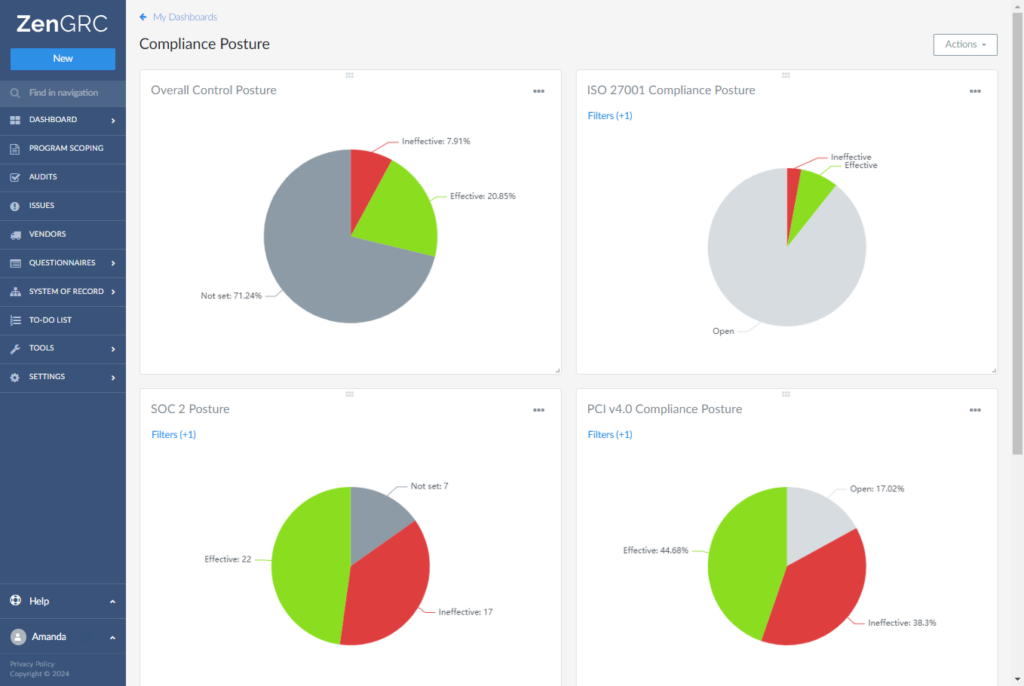Retail
Manage Security Controls, Comply with Regulations, Protect Data
The Regulatory Burden
Cyber security threats are a rising concern for retail companies as they increasingly utilize technology such as mobile devices, self-checkouts and other technologies. Retailers need to understand their customers to offer the right products, at the right time, at the right price, and to service them in their preferred way.
How do you do that? The answer is data—lots of it. The more you collect, the more you can analyze what your customers need and outshine competitors. This customer data is increasingly moving into the hands of sales associates on mobile devices and tablets in-store where they can access information on customer interactions, check inventory levels and access current promotions.
Customers can even complete transactions from their mobile devices via self-checkouts via Apple, Google Pay or other payment platforms. While these devices help deliver better customer experiences, retailers are also potentially increasing their cyber risk through the increased use of IoT devices and an expanded attack surface.
In addition to the high volume of data retailers must protect, competing globally means achieving compliance with numerous regulations. To do this successfully, retailers need a unified risk and compliance solution built to help them assess and reduce cyber risk, identify all of their compliance requirements and implement data privacy best practices.
A Framework for Cybersecurity Success
Security and compliance risks around the collection of data have never been higher. This is put into perspective when one considers the variety of data a retailer is likely to collect including names, payment information, addresses, age, purchasing history and more.
The above is just for point-of-sale transactions with major credit cards. If the retailer runs its credit card program or conducts e-commerce, it will collect customers’ credit histories, user IDs and passwords, and more.
All of that data is subject to protection from multiple laws that can reach across various jurisdictions. U.S. retailers, for example, strive to demonstrate compliance with the PCI DSS framework to protect credit card data. A business that collects data about European Union citizens will need to confront the EU’s General Data Protection Regulation (GDPR).
With all of these requirements, it quickly becomes unmanageable to manually track the implementation of compliance requirements.

Manage Compliance and Risk with Confidence and Ease
Our solutions provide retailers of all sizes a cost-effective, unified system to manage controls across multiple compliance and cybersecurity frameworks and enable CISOs to monitor key performance indicators for compliance and IT security efforts.
Our governance, risk and compliance solution continuously monitors your compliance stance and automatically provides real-time risk scores, showing you where you’re doing well and where you (or your vendors) may have security gaps that should be filled to maintain compliance and increase security.
ZenGRC’s centralized dashboard shows you, at a glance, how to fill compliance gaps, reduce areas of highest risk, and understand your compliance and risk posture.
With ZenGRC, you can let the retail compliance and risk software do the heavy lifting and focus your attention on what matters — keeping your customers happy and growing your business.
Compliance Objectives
Several compliance regulations impact retailers and risk management frameworks that can empower you to protect your business, safeguard data and meet legislative objectives.
For example, PCI DSS 3.2 requires retail companies to demonstrate ongoing compliance with security standards. At the same time, the NIST Cybersecurity Framework (CSF) can empower retailers to better understand their cybersecurity risks and improve their defenses.
However, tracking risk assessments, gap analyses and remediation efforts across multiple frameworks can be daunting when done manually through spreadsheets.
With an automated solution like the ZenGRC, you can clearly define your requirements and obtain actionable guidance to help you:
- Assess vulnerabilities in your transaction systems, network and application layers
- Analyze customer and payment data collection practices for non-compliant behaviors
- Remediate any weaknesses while organizing your documentation for potential audits
- Map progress on those remediation efforts to ensure that risks are appropriately mitigated
- Report risk assessments and remediations for compliance certification
- Integrate new threat alerts or updated regulations into your compliance program
FAQs for Retail Industry
Is PCI DSS legally required?
PCI DSS is not required by law, but often, it is required by contracts with major payment card brands. Thus, merchants and retailers who process transactions will likely be needed to fulfill its requirements.
How can retailers become PCI-Compliant?
PCI DSS lays out twelve requirements for merchants and retailers who want to achieve compliance with the framework:
- Safeguard cardholder data with a secure system and network firewalls
- Update weak or default passwords with unique, more complex versions
- Any cardholder data or customer behavior data should be secured if stored
- Encrypt cardholder data transmitted over networks
- Implement antivirus protocols and ensure all security software is updated
- Ensure IT systems and applications are protected and monitored
- Restrict access to sensitive data
- Assign team members with access to sensitive data a unique ID
- Restrict physical access to sensitive data
- Access to sensitive data should be monitored and routinely reviewed
- Routinely test all security measures to ensure they can reasonably withstand threats
- Create clear and consistent information security policies made available to all staff
What third-party risks should retailers consider?
As retailers implement their own risk management and security programs, they must also consider those of any third-party vendors that fulfill their supply chain. Here are some of the risks retailers should consider:
- Security vulnerabilities of Software-as-a-Service (SaaS) providers
- Poor information security practices by third-parties
- Compromised hardware or software that integrates with your systems
- Subpar security controls for third-party data storage
Should any of these be present in your supply chain, that risk can impact your critical infrastructure, operations, and any sensitive data you store.
